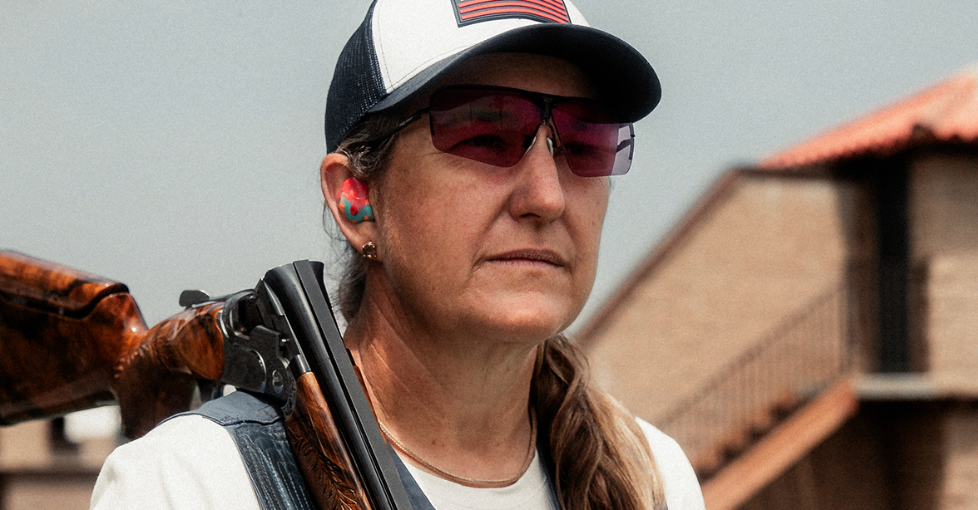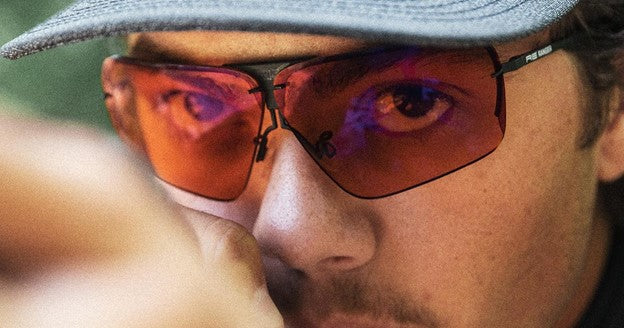Fogged-up lenses are a common frustration for shooters. Whether you’re at the range, in a competition, or hunting in unpredictable conditions, losing visibility for even a second can cost accuracy and safety. Shooting sunglasses are built to protect your eyes from glare, UV rays, and impact — but if they fog, their effectiveness drops instantly. The good news? With the right approach, you can keep your shooting sunglasses clear, fog-free, and dependable in any weather.
Explore our shooting sunglasses collection designed for clarity and protection in all conditions.
Why Do Shooting Glasses Fog Up?
Fogging occurs when warm, moist air (from your skin or breath) hits a cooler lens surface, creating condensation. Shooting sunglasses are especially prone to this when:
-
You transition quickly from cool to hot environments.
-
You’re shooting in humid or rainy conditions.
-
Sweat builds up around your frames.
That’s why many shooters invest in fog-resistant glasses or ballistic-rated sunglasses. While these features help, fogging is influenced by multiple factors — and knowing how to manage them ensures better performance.
Do Anti-Fog Lenses Really Help?
Yes. Anti-fog lenses are treated with hydrophilic coatings that spread out water droplets, keeping your vision clear. They’re commonly used in anti-fog eyeglasses for sports, safety gear, and tactical eyewear. For shooters, the benefits are clear: fewer distractions, sharper vision, and improved accuracy.
For example, Ranger shooting glasses come with hydrophobic and anti-fog coatings that help reduce condensation. Many models, like the XLW and Phantom, feature vented lenses and adjustable nose pads to maintain airflow, keeping your vision clear even in humid or cold conditions.
But here’s the catch: no lens is permanently fog-proof. Even fog-resistant glasses eventually require proper care and handling. That’s why shooters rely on purpose-built ballistic glasses and tactical sunglasses designed for consistent clarity in demanding environments.
How to Keep Shooting Sunglasses Fog-Free

To maintain visibility in all conditions, here are practical strategies that actually work:
-
Choose Glasses with Anti-Fog Features
Shooting eyewear with built-in anti-fog lenses reduces condensation naturally. Opt for frames designed for ventilation and airflow to keep lenses clear. Models like Ranger Edge and Phantom provide vented lenses and hydrophobic coatings specifically for this purpose.
-
Ensure Proper Ventilation
Frames that sit too close to the face trap heat and moisture. Look for designs that mimic fog-resistant glasses with small vents or airflow channels to reduce fog buildup.
-
Keep Lenses Clean
Dust and oils attract moisture. Clean your eyewear regularly with a microfiber cloth to ensure it acts like true anti-fogging eyeglasses. Avoid paper towels or abrasive materials that can scratch the lenses.
-
Adapt to Temperature Changes
Moving gradually from cool to warm environments helps your anti-fog eyeglasses adjust. Step outside slowly before shooting to minimize fog formation.
Shooting in Different Weather Conditions
Weather affects how quickly lenses fog. Here’s how to prepare:
-
Cold Weather: Fogging is almost instant when warm breath meets freezing air. Use ballistic-rated glasses designed for fog and impact resistance, like Ranger XLW or Phantom.
-
Humid Climates: Moisture builds rapidly. Choose tactical sunglasses with anti-fog lens coatings and proper ventilation, such as Ranger Edge.
-
Rainy Conditions: Frames with water-channeling designs and hydrophobic coatings maintain visibility better than standard lenses.
By tailoring your eyewear care to the weather, you’ll avoid interruptions during critical moments.
Shooting Sunglasses vs. Regular Anti-Fog Eyeglasses
It’s tempting to think regular anti-fog eyeglasses will work for shooting, but they aren’t built for ballistic protection. Shooting sunglasses combine fog control with impact resistance, UV protection, and tactical-grade durability.
-
Ballistic Glasses: Certified to withstand impact from high-velocity fragments.
-
Tactical Sunglasses: Designed for performance in dynamic environments with anti-fog and glare-reducing features, like Ranger shooting glasses.
- Everyday Anti-Fogging Eyeglasses: Good for clarity, but not safe for firearms use.
Location-Specific Tips: Shooting in the USA
Across the USA, climate plays a big role in how your shooting sunglasses perform:
-
Midwest & Northern States: Cold winters make fog-resistant glasses essential.
-
Southern States: Humidity demands durable anti-fog eyeglasses and proper frame ventilation.
-
Coastal Areas: Salt air corrodes lenses; choose strong anti-fog spectacles with UV and weather resistance, like Ranger ballistic sunglasses.
By considering your location, you’ll find the best balance of fog control and protection.
Final Thoughts
Clear vision is non-negotiable for shooters. While fogging is a natural challenge, the combination of fog-proof glasses, anti-fog lenses, and proper care ensures your shooting sunglasses stay dependable in every situation.
Whether you’re training with tactical sunglasses, hunting in the field, or competing at a professional level, your eyewear should enhance — not interrupt — your performance. Models like Ranger XLW, Edge, and Phantom demonstrate how proper design, ventilation, and lens coatings can keep your vision clear no matter the weather.
Ready to upgrade your gear? Explore our full range of shooting eyewear built for clarity and safety in every condition.



Leave a comment
This site is protected by hCaptcha and the hCaptcha Privacy Policy and Terms of Service apply.